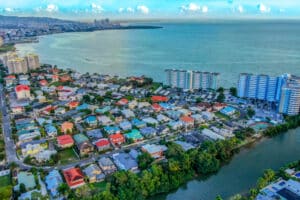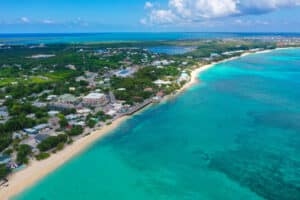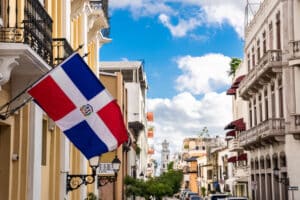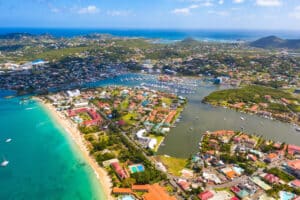Haiti is nestled on the second-largest Caribbean island, Hispaniola, and shares its stunning scenery with the Dominican Republic.
There’s a lot to love about Haiti—the untouched rainforest of Macaya National Park, the mesmerizing Saut Mathurine waterfall, the enchanting island Île à Rat, the grand Sans Souci Palace, the hidden gem of Grotte Marie Jeanne underground cave, and the tropical haven of Cotes des Arcadins.
Unfortunately, beyond the scenic beauty, Haiti’s turbulent sociopolitical scene makes it a highly dangerous destination—political turmoil, criminal activity, civil unrest, and the highest travel advisory warning against visiting this country. Stay with us to uncover more about Haiti.
Are you planning a last minute trip to Haiti? We’ve put together all the resources you’ll need for a fun & safe travel:
🛌 Best & Safest Places to Stay in Haiti:
👉 NH Haiti El Rancho – Key card access, Bath, Mountain view
👉 Marriott Port-au-Prince – Pets allowed, Garden, Family rooms
👉 Satama Hotel – Outdoor swimming pool, Free WiFi, Very good breakfast
👉 Habitation Des Lauriers – Spa and wellness centre, Free WiFi, Room service
⛱️ Fun Activities & Tours in Haiti:
👉 Augusnel Tour. “We do it Safe & We do it Best”.
👉 Citadelle Laferriere Sightseeing Tour from Cap-Haitien
👉 Blue Waterfalls (Bassin Bleu) adventures from Jacmel, Haiti
🚗 Best & Safest Haiti Transportation Services:
👉 Airport Pickup Service – Welcome Pickups
👉 Rent a Car – DiscoverCars
🙏 Stay Safe While Travelling:
👉 Safetywing (for medical insurance)
👉 VisitorsCoverage (for trip insurance)
Is Haiti Safe?

No, Haiti is not a safe destination for travelers. In imperialist times, Haiti was the most profitable colony globally due to its sugar and coffee trade. But, as usual, colonialism has taken its toll. Today, Haiti ranks among the world’s poorest countries.
Additionally, Haiti is still grappling with the aftermath of the devastating 2010 earthquake, which claimed over 300,000 lives and rendered 1.5 million people homeless.
Drive from Port-au-Prince’s international airport to the city center, and you’ll pass through slums where goats and pigs scavenge through piles of trash. Teens clean car windows in halted traffic, and hotels are guarded by armed personnel.
Why the armed guards? Well, there’s virtually no safe haven in this country. The threat of violent crime is very real and present everywhere. As a result, Haiti earned one of the lowest ranks in the 2023 Global Peace Safety Index, coming in at 129 out of 163 countries.
- International travel advisories: Level 4 (Do Not Travel); violent crime and shortage of basic necessities are widespread
- Crime rating: High, 77.88
- Most dangerous areas: Artibonite Central, Bas-Delmas, Bel Air, Carrefour, Carrefour, Drouillard, Champs-de-Mars, Cité Soleil, Croix-des-Bouquets, Downtown Port-au-Prince, Fontamara, Jalousie, Laboule 12, Martissant, Portail Léogane, Road to the airport, Santo, Tabarre, Torcelle, and Toussant Brave
- Public transportation safety: Passengers often fall victim to assault, abductions, and theft; official taxis are rare, buses are few, and minibusses lack safety features
- Safety walking alone during the day: Low
- Safety walking alone during the night: Very low
- Road safety: Roads lack proper markings, some are closed, and others have large potholes
- Beach safety: The safest beaches are located at the Labadee Resort; take notice of the warning flags and keep an eye on your belongings
- Tap water: Unsafe to drink
- Common natural disasters: Earthquakes, hurricanes, and tsunamis
- Carbon monoxide poisoning: Possible, a portable carbon monoxide detector is advised if you plan to travel
- Police presence: Severely understaffed and may lack the resources to respond effectively to serious criminal incidents
- Medical care quality: Hospitals and clinics lack qualified doctors, basic equipment, and resources for treating patients
Travel Advisory for Haiti
Every international travel advisory echoes the same stark warning for Haiti—Do Not Travel.
The United States, the United Kingdom, Canada, Australia, and New Zealand travel advisories all place Haiti in the highest risk category—Level Four—and strongly discourage travelers from visiting due to:
- Violent Crime: Travelers are at risk of being followed and violently attacked especially after leaving the Port-au-Prince International Airport. Criminals target vehicles stuck in heavy traffic.
- Civil unrest: Ongoing political instability leads to violent demonstrations, roadblocks, and attacks by criminal organizations, impacting areas like Route Nationale 2 from Martissant to Miragoane.
- Lack of police protection: Local police often lack the resources to respond effectively to serious criminal incidents, particularly in Artibonite Central, Bas-Delmas, Bel Air, Carrefour, Carrefour, Drouillard, Champs-de-Mars, Cité Soleil, Croix-des-Bouquets, Downtown Port-au-Prince, Fontamara, Jalousie, Laboule 12, Martissant, Portail Léogane, Road to the airport, Santo, Tabarre, Torcelle, and Toussant Brave.
- Poor healthcare infrastructure: Medical clinics and hospitals lack qualified staff, basic equipment, and resources. Life-threatening emergencies may require evacuation at the patient’s expense.
- Severe shortages of basic necessities: Frequent power outages, as well as water and fuel shortages, are common. Tap water is generally unsafe to drink.
- Natural disasters: Cyclones, hurricanes, tropical storms, floods, and earthquakes continue to pose a significant risk, with limited government capacity to respond effectively.
Given these substantial risks, it is strongly advised to avoid traveling to Haiti.
A Comprehensive Look at Haiti Crime Rates
Haiti has a high crime rating of 77.88.
Data from the Haitian National Police and the UN reveal a dire situation in the first quarter of 2023—over 1,600 reported incidents. This is a staggering rise, as the number nearly tripled from 692 incidents during the same period of the previous year (Q1 2022).
The capital Port-au-Prince and its metropolitan region face the cruelty of approximately 150 criminal groups, many affiliated with the G-Pèp and the G9 alliance. Cité Soleil has served as the main battleground for rival disputes between the G9 and the G-Pèp alliance.
With violence surging in Haiti, people are witnessing a full-blown humanitarian crisis. In 2023, nearly 200,000 people have been displaced, around 70,000 individuals are living in makeshift settlements, 31,000 live out in the open, and another 34,000 are crammed into classrooms.
The situation demands urgent attention from authorities, and a wake-up call for you, tourists, to reserve this destination for better days.
| Safety Concerns | Crime Rate | Status |
| Overall Crime Level | 87.10 | Very High |
| Increase in Crime (Past 3 Years) | 82.01 | Very High |
| Home Break-Ins and Thefts | 78.37 | High |
| Mugging and Robbery | 83.54 | Very High |
| Car Theft | 68.75 | High |
| Theft from Vehicles | 78.44 | High |
| Personal Attacks | 75.38 | High |
| Verbal Insults | 56.91 | Moderate |
| Racial, Ethnic, Gender, or Religious-Based Attacks | 48.94 | Moderate |
| Drug Use and Dealing | 73.94 | High |
| Property Crimes (Vandalism and Theft) | 82.52 | Very High |
| Violent Crimes (Assault and Armed Robbery) | 84.76 | Very High |
| Corruption and Bribery | 92.55 | Very High |
| Safety Walking Alone in Daylight | 30.37 | Low |
| Safety Walking Alone at Nighttime | 13.13 | Very Low |
Source: Numbeo, 2024 data, based on 50 contributors
Police Presence in Haiti
The Haitian National Police force is severely understaffed and lacks the necessary equipment to tackle the country’s widespread violence and criminality. The force is pressed rather thin, with personnel dropping from 14,772 to around 13,200 in 2023.
If you happen to visit Haiti for whatever reason—despite the warnings of the authorities—know that police protection in Haiti is not guaranteed. If you believe that you are being followed in Haiti, be it after leaving the airport or anyplace else, prioritize your safety and go to the nearest police station immediately.
Public Transportation Safety in Haiti
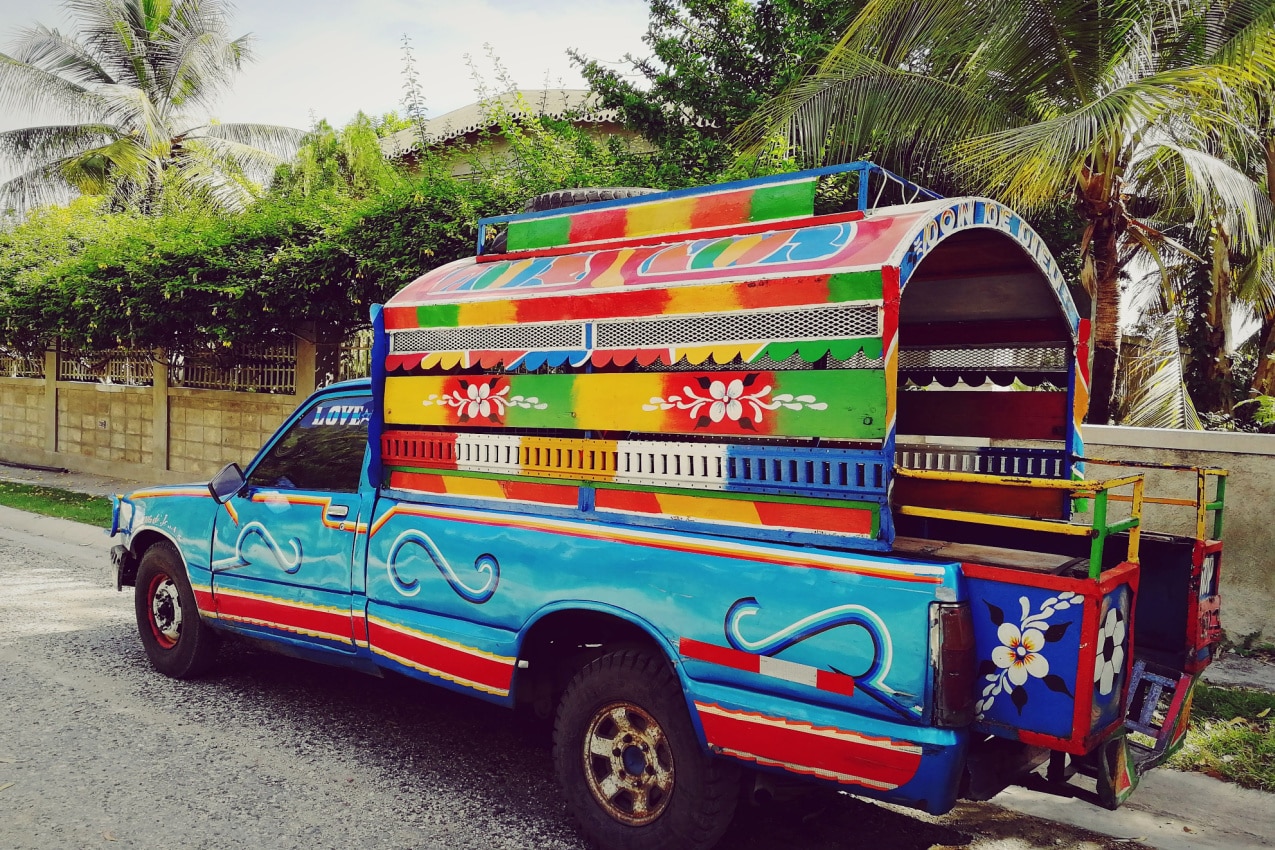
Public transportation in Haiti comes with a host of challenges, and safety is a major concern.
Official taxis are a rarity, buses are few and far between, and the shared “tap-tap” minibusses, although commonly used, should be avoided as they lack safety features, the drivers drive recklessly, and are often overcrowded. Reports of armed robberies and abductions associated with public transportation raise serious red flags. Adding to the list of reasons to avoid public transport, bus stations are often chaotic hotspots for pickpocketing and scams.
Road Safety in Haiti
Driving in Haiti is not safe. Many roads lack proper markings, others are closed, and a great majority have large potholes caused by massive earthquakes.
If this weren’t enough, Haiti’s roads are shared spaces with animals that are rather oblivious to the concept of cars. In urban areas, encounters with smaller animals like pigs, dogs, and goats are common, while rural roads may lead to encounters with larger animals such as cows and donkeys.
Medical Care Quality in Haiti
Healthcare in Haiti is limited and inadequate.
Fontaine Hospital Center, situated in the heart of Cité Soleil—the most densely populated and violent area of the capital—stands as one of the last bastions for medical treatment. Ambulance services are limited, and they might not be well-equipped with essential medical supplies, so effective emergency response is also not guaranteed.
When seeking medical attention, visitors should be prepared for immediate cash payments, even if they have valid travel health insurance. Pharmacies might stock expired medications, and some crucial medications may not be available.
In life-threatening situations, be aware that Haiti may not be able to provide you with sufficient medical treatment. In such cases, evacuation might be necessary, and it often comes at the patient’s own expense.
Is It Safe to Travel Solo in Haiti?
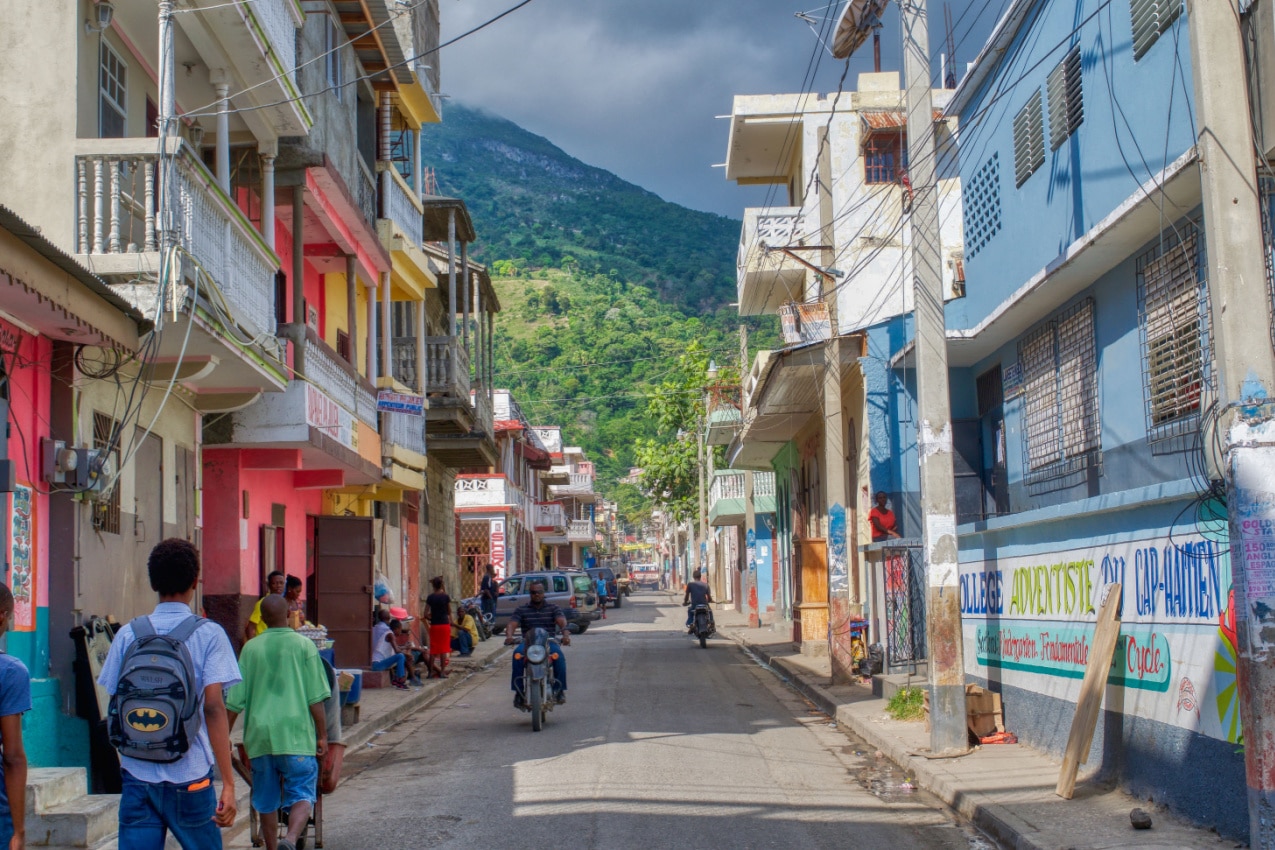
Travel advisories strongly discourage solo visits to Haiti due to a multitude of safety concerns, civil unrest, and limited healthcare facilities.
Solo travelers, in particular, are viewed as easy targets and might find themselves more susceptible to harassment and assault. Public transportation adds another layer of risk, as it’s both unreliable and unsafe, especially after nightfall. Until travel advisories change, it’s best to avoid solo trips to Haiti.
Perils of Nature: The Risk of Natural Disasters in Haiti
Haiti is at risk of a few natural disasters: hurricanes, earthquakes, and tsunamis.
Hurricanes
Haiti lies in the Atlantic hurricane belt, making it susceptible to hurricanes and tropical storms during the hurricane season, which is from June 1 to November 30. On average, about five such events occur each year, with the most affected regions being southeast, south, and northwest.
The latest hurricane, Franklin, reached tropical storm hurricane status with winds up to 57 mph (93 km/h) on August 24, 2023, near Dérac. The most devastating hurricane season, however, happened back in 2008 when storms Fay, Gustav, Hanna, and Ike caused widespread destruction.
In case of a hurricane or severe storm:
- Be aware of potential travel disruptions
- Flights may be delayed or suspended
- Adequate shelter might be limited
- Port access could be impacted
If a hurricane is imminent:
- Identify local shelters
- Follow the advice from local authorities
- Stay informed with updates from the US National Hurricane Center
Earthquakes
Haiti, located along the boundary of the Caribbean and North American tectonic plates, is susceptible to seismic activity.
One of the most devastating earthquakes occurred in 2010, registering 7.0 on the Richter scale. Lasting 35 seconds, it resulted in 220,000 dead, 300,000 injured, and 1.5 million homeless.
Tragically, that wasn’t the strongest one, nor the last one to devastate the nation. The strongest earthquake in Haiti occurred in 2021, with a magnitude of 7.2 on the Richter Scale. It claimed 2,248 lives and triggered a tsunami warning.
To this day, earthquake-damaged infrastructure, including health services, roads, telecommunications, and utilities, remains a challenge. Water and sewerage system damages have contributed to increased disease outbreaks in Haiti.
In the event of an earthquake hit in Haiti:
- Drop to the ground, take cover under something sturdy, and hold on until the shaking stops
- If outdoors, find a clear spot away from buildings and trees, and remember to drop, cover, and hold on
Tsunamis
Tsunamis are colossal tidal waves triggered by earthquakes or seismic eruptions beneath ocean surfaces.
The most destructive tsunami in Haiti’s history occurred in 1842, reaching a towering height of 16 feet (5m) and claiming 300 lives. The 7.0 earthquake in 2010 also generated a tsunami with 3.2-meter waves, resulting in three fatalities. In 2021, following the 7.2 earthquake, tsunami warnings were issued for some Haitian coasts, though fortunately, an official tsunami did not occur.
If you’re near the Haiti coast and experience a strong or prolonged earthquake, notice sea-level changes, or hear unusual oceanic noises, promptly move to higher ground as advised by local authorities.
Tsunamis can strike within minutes of seismic activity, but if you register on the Global Disaster Alert and Coordination System, you’ll receive a timely alert if a tsunami is approaching. Don’t wait for official alarms, act swiftly. Once in a safe location, stay informed through local media.
Beware the Silent Threat: Carbon Monoxide Poisoning in Haiti
Hotels and motels face a genuine threat from carbon monoxide poisoning. In Mexico City, three AirBnB guests lost their lives to carbon monoxide, and another group faced a similar fate at a Sandals Resort in the Bahamas.
Haiti hasn’t experienced such incidents with tourists yet, but it doesn’t mean it’s impossible.
Carbon monoxide (CO) is an invisible and odorless toxic gas. For instance, if your hotel has a malfunctioning appliance, like a stove, water heater, or heating system, the gas can leak into your room, slowly poisoning you.
Many hotels use CO detectors to keep guests safe from dangerous gas—but not all of them. It’s best to purchase a portable CO detector, especially if the hotel doesn’t have one or it’s broken.
Remember, if you get headaches, throw up, or feel sick, that could be CO poisoning. Get medical care immediately. Longer exposure to CO may have tragic effects, like paralysis, brain damage, or fatal consequences.
Serenity by the Shore: The Safety of Haiti Beaches
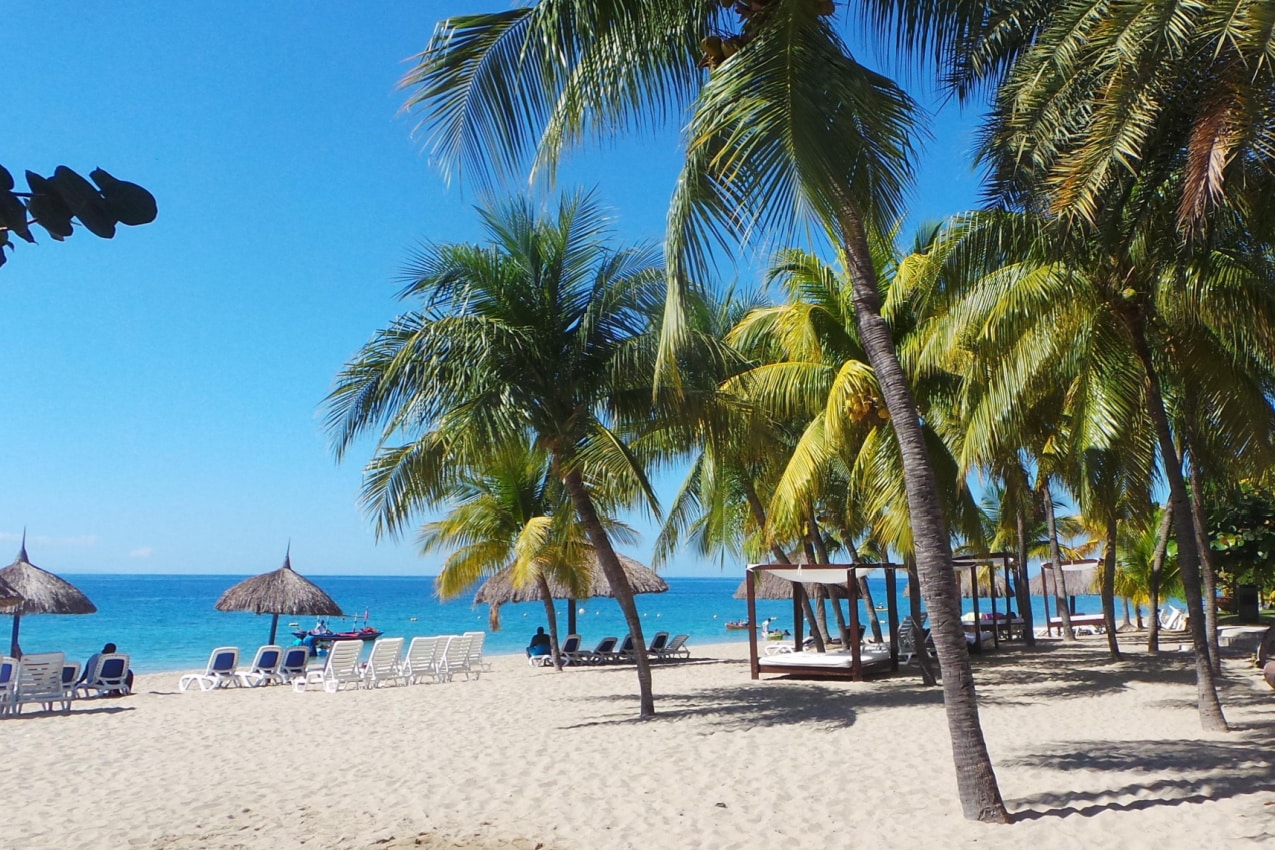
Considering the widespread violence in Haiti, some might think twice about visiting any of its beaches. However, if you decide to ignore the serious warnings, the safest beach to visit would be Labadee.
Labadee is a private beach resort on Haiti’s northern coast, owned by Royal Caribbean Cruise Lines and exclusively accessible to cruise ship passengers. The resort is well-protected, with trained security personnel ensuring the safety of tourists.
When hitting the beach, it’s a good idea to pay attention to warning flags:
- Red Flag: High surf, life-threatening currents – Don’t swim
- Yellow Flag: Potential high surf or risky currents – Swim with caution
- Green Flag: Safe to swim
- Purple Flag: Presence of dangerous marine life like sharks, jellyfish, or sea urchins – Swim with extreme caution
- Blue Flag: The beach is recognized for excellent water quality, environmental care, and safety
Not all beaches have these flags, so it’s advisable to talk to locals or resort staff about the safety situation before heading out for a swim. Once there, remember the basics: wear sunscreen and keep an eye on your stuff.
Haiti Weather Patterns: What to Expect
Haiti has a hot tropical climate year-round. The average temperatures range from the high 70s°F (about 25°C) in winter to the mid-80s°F (about 30°C) in summer.
The specific temperatures vary based on the elevation, with slightly higher temperatures in inland plains and on south-facing coasts, and slightly lower temperatures along north-facing coasts.
The sunny and dry season in Haiti starts in December and lasts until April. January is the sunniest month, with clear skies about 79% of the time and very little rain, averaging 0.4 inches (about 1 cm).
The cloudy and wet season spans from May to November. September is the cloudiest month, with overcast or mostly cloudy skies about 74% of the time. The wettest days occur in May, averaging 5.1 days with 2.1 inches of rainfall (about 13 cm).
Haiti gets quite windy from the end of June to mid-August, with average speeds exceeding 5.7 mph (about 9.2 km/h). June is the windiest month, with an average hourly speed of 6.4 mph (about 10.3 km/h). This aligns with the hurricane season from June to November, increasing the likelihood of hurricanes during the windy months.
Conversely, the calmer wind period spans 9.2 months, from the end of August to May. October is the calmest month, with an average hourly wind speed of 4.9 mph (about 7.9 km/h).
The water is warmest from July to November, with an average temperature above 84°F (about 28.9°C). September has the warmest water, with an average temperature of 85°F (about 29.4°C), while February sees the coolest water, averaging 81°F (about 27.2°C).
Monthly Average Temperatures in Haiti
| Month | Fahrenheit (°F) | Celsius (°C) |
| January | 80 | 26.6 |
| February | 80 | 26.6 |
| March | 81 | 27.2 |
| April | 83 | 28.3 |
| May | 84 | 28.8 |
| June | 84 | 28.8 |
| July | 86 | 30 |
| August | 86 | 30 |
| September | 85 | 29.4 |
| October | 84 | 28.8 |
| November | 82 | 27.7 |
| December | 80 | 26.6 |
Source: WeatherSpark, 2024 data
When Is the Best Time to Visit Haiti?
Currently, there’s no good time to book a trip to Haiti. However, if the safety situation improves, crime levels drop, and international travel advisories give it the green light, you might want to plan your trip during the dry season, from December to April.
The dry season has several perks: escape from the snow or cold of the northern hemisphere, balmy weather perfect for beach time, and calm seas that are great for activities like surfing, snorkeling, diving, and trekking.
However, there’s one downside: December to April is also peak tourist season, making it a bit tricky and sometimes expensive to find flights. The busiest months are December and January, with Haitians living abroad returning for end-of-year celebrations with friends and family.
If you do visit during peak tourist season, book well in advance and do a little digging to find the best hotel deal.
How to Stay Safe in Haiti
By now, it should be clear that traveling to Haiti involves serious risks. If you choose to travel there anyway, make sure to follow these safety guidelines:
- Sign up for the Smart Traveler Enrollment Program. It’s a free service that provides real-time security information and maintains a connection between you and your government.
- Consider booking a hotel room at the private beach resort Labadee. The resort is well-protected by trained security personnel.
- Get all recommended vaccinations (for diphtheria, tetanus, polio, hep A., typhoid, cholera) at least one month before your departure.
- Stay up-to-date on natural disasters. Monitor hurricanes at the National Hurricane Center, earthquakes on VolcanoDiscovery, and tsunamis on the Global Disaster Alert and Coordination System.
- Have someone meet you at the airport or pre-book an airport transfer. Never use public transport.
- If you must drive, keep your fuel tank at least half-full, as the gas stations may often have limited supplies.
- Dress modestly and avoid flashy displays of wealth, as you don’t want any additional attention.
- Make and carry copies of important documents, such as your passport and driver’s license, in case of theft.
- People may not appreciate being photographed in poor or urban areas, so seek permission before taking pictures.
- Purchase a Digicel Haiti SIM card for reliable internet and cell service—you don’t want to be unable to contact emergency services (or your family abroad) while in Haiti.
- Exercise extreme caution when using banks. Use ATMs only in secure locations like malls or markets and never in public spaces.
- Avoid going out after sunset. If you’re hungry, consider using a food delivery app like Uber Eats, which operates in major cities in Haiti.
- Violent crimes are common. Be extremely vigilant and aware of your surroundings at all times. If someone tries to steal from you, don’t resist. Criminals are often armed, and resistance may lead to fatal injuries.
- Seek immediate medical help if you’re a victim of violent crime.
Emergency Numbers
- Ambulance: 116/ 3685-0717
- Police: 114/ 3805-8888/ 3838-1111
- Civil Protection: 4448-6571/ 3623-0303/ 4896-0564
- Electricity: 2212-2212
- Water Supply and Sanitation Directorate: 5959
- Fire department: 2945-1111
Leave Your Haiti Vacation for Better & Safer Times
Who would have guessed that such a stunning country could be so risky? Unfortunately, life-threatening dangers make visiting Haiti a rather bad idea at present.
So until the situation improves, we strongly recommend heeding international travel advisories and not visiting this country.
If you decide to go despite the warnings, take maximum precautions. Upon arrival, ensure that no one is following you, as criminals have been known to observe people arriving at the airport and then following them with malicious intent.
Stick to the secure resort areas, arrange organized transport, never venture into high-crime zones, and stay safely locked in at night.
